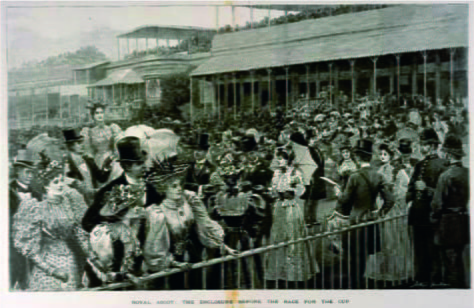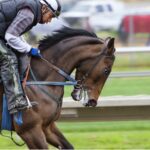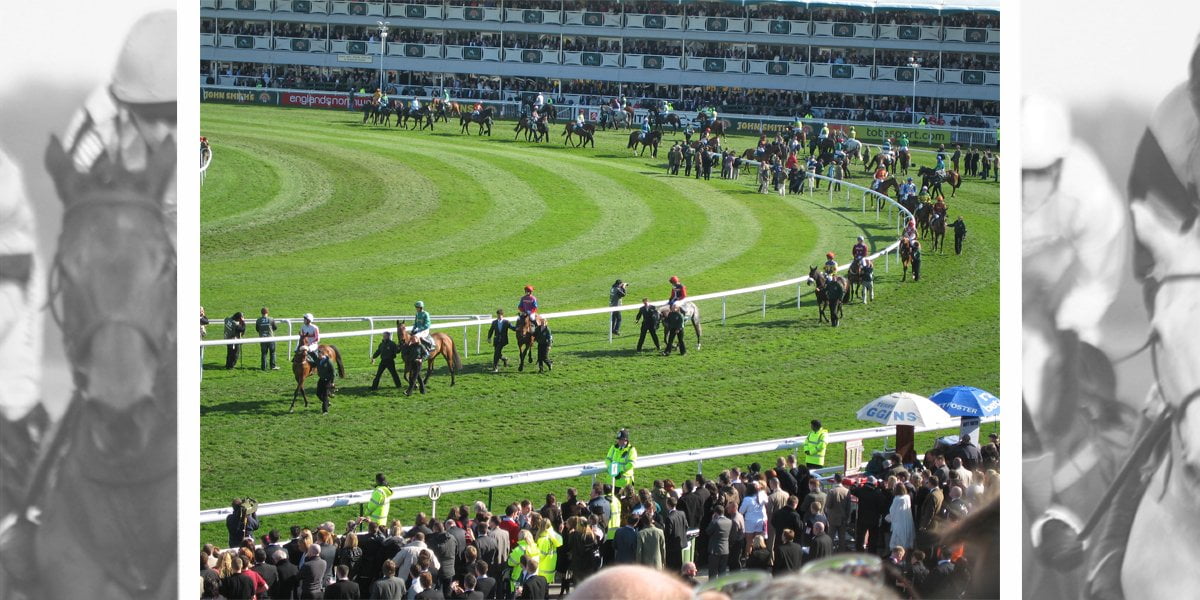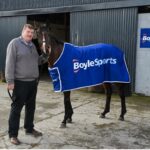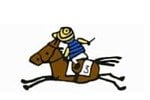[et_pb_section bb_built=”1″ admin_label=”section”][et_pb_row admin_label=”row”][et_pb_column type=”4_4″][et_pb_text admin_label=”Text” background_layout=”light” text_orientation=”left” use_border_color=”off” border_color=”#ffffff” border_style=”solid”]
Royal Ascot History and Traditions
It was Queen Anne who first saw the potential for a racecourse at Ascot, which in those days was called East Cote. Whilst out riding in 1711, she came upon an area of open heath, not far from Windsor Castle, that looked an ideal place for “horses to gallop at full stretch.”
The first race meeting ever held at Ascot took place on Saturday 11th August, 1711. Her Majesty’s Plate, worth 100 Guineas and open to any horse, mare or gelding over the age of six, was the inaugural event. Each horse was required to carry a weight of 12st and seven runners took part.
This contest bore little resemblance to racing seen at Ascot today. The seven horses were all English Hunters, quite different to the speedy thoroughbreds that race on the Flat now.
The race consisted of three separate heats which were four miles long (each heat was about the length of the Grand National), so the winner would have been a horse with tremendous stamina. Sadly, there is no record of the winner of the first Plate.
The racecourse was laid out by William Lowen, who was assisted by a team of helpers; William Erlybrown, a carpenter, Benjamin Cluchett, a painter, and John Grape, who prepared the paperwork for racing. The first permanent building was erected in 1793 by George Slingsby, a Windsor builder. It held 1,650 people and was used until 1838.
In 1813, Parliament passed an Act of Enclosure. This Act ensured that Ascot Heath, although the property of the Crown, would be kept and used as a racecourse for the public in the future. Racing at Ascot was now secure.
The precise origin of the Royal Meeting is unclear. It was an event that evolved, perhaps, rather than was introduced at a specific time, but the first four-day meeting took place in 1768. Arguably, the meeting as we know it today started to take shape with the introduction of the Gold Cup in 1807.
Gold Cup Day is the third day of Royal Ascot. Although you won’t find it in any marketing or promotional literature, Thursday is colloquially known as Ladies’ Day.
The term Ladies’ Day seems to have been first used in 1823, when an anonymous poet described the Thursday of the Royal Meeting as “Ladies’ Day, when the women, like angels, look sweetly divine.” In the formative years, Thursday was certainly the dominant day in terms of the racing, attracting the largest crowds and, it must be assumed from the emergence of the term, more ladies!
Almost every racecourse markets a Ladies’ Day now but the great charm of the original is that it has not been manufactured. It is the public, not the racecourse, who call it Ladies’ Day.
The Gold Cup is Ascot’s oldest surviving race, and the winning owners receive a gold trophy which becomes their property. Trophies to keep are only awarded for three races at the Royal Meeting, the other two being the Queen’s Vase, inaugurated in 1838 to commemorate Queen Victoria’s accession, and the Royal Hunt Cup (1843). For all other races, trophies are awarded which are returned to Ascot and presented each year.
It was at around the time of the first running of the Gold Cup that the roots of today’s traditional Royal Enclosure dress code emerged.
Beau Brummell, a close friend of the Prince Regent, decreed that men of elegance should wear waisted black coats and white cravats with pantaloons. Over the years, this has evolved into the wearing of morning suits and equally formal clothes for ladies, who must wear hats.
Although a Royal Stand dates back to the 1790s, the Royal Enclosure that current regulars are used to at Ascot was conceived in 1822 when King George IV commissioned a two-storey stand to be built with a surrounding lawn. Access was by invitation of the King.
In 1825, the Royal Procession as an annual tradition began. The King, leading four other coaches with members of the Royal party, drove up the centre of the racecourse in front of the crowds and this has continued to the present day.
The administration of Ascot has always been handled by a representative appointed by the Monarch. The racecourse was run on behalf of the Sovereign by the Master of the Royal Buckhounds up until 1901 when Lord Churchill was appointed as the first official Representative of His Majesty, a post held today by Johnny Weatherby (as Her Majesty’s Representative).
In 1913, when the Ascot Authority was established by an Act of Parliament, His Majesty’s Representative became Senior Trustee of the Authority with the Clerk of the Course acting as Secretary. Today, as Ascot Authority (Holdings) Limited, Ascot has a formal board comprising a Chief Executive, a Chief Operating Officer, a Finance Director and a Commercial Director (from the executive team), supported by Her Majesty’s Representative (Chairman), two further trustees and non-executive director.
In 1955, the rules of divorce were relaxed and divorcees were able to enter the Royal Enclosure. However, a redevelopment of the Enclosure shortly before this had added the new Queen’s Lawn, which was by invitation and the Court rules governing divorce still applied.
Ascot’s first major redevelopment came to fruition in 1954, with the relocation of the straight mile north to allow more space behind the stands. This was the second such move and even this time around, they didn’t go quite far enough as the track was moved a further 42 metres north as part of the 2005 redevelopment. Prior to the second move, the straight track cut right through the existing Number One Car Park into the current site of Heatherwood Hospital.
The Queen Elizabeth II Grandstand, built by Wimpey, was erected between the 1960 and 1961 Royal Meeting and the Members’ Stand went up between Royal Ascot 1963 and 1964.
The Car Parks at Ascot almost certainly play more part in the event than at any other venue – they are far from merely functional with lavish picnics, including butlers, candelabra and silver service not uncommon, especially in Number One and Two Car Parks. In 2006, a Country Life survey found that Royal Ascot is the South of England’s most popular picnic spot and the most popular sporting occasion at which to picnic in the country.
Although Ascot likes to think it runs Number One Car Park, it is far from uncommon for berths in this sought after spot to be passed down formally from generation to generation.
Ascot’s much loved tradition of “singing around the bandstand” or “community singing” began in the 1970s under the stewardship of Lady Beaumont, wife of the then Clerk of the Course, Captain Sir Nicholas Beaumont. The now unmissable sing song of British favourites and flag waving after racing was an immediate success with thousands of racegoers staying on and making it an integral part of their day. Now, traditional singing is listed as part of the day’s formal proceedings in the racecard and song books and flags are handed round.
2002 saw plenty of change to the established pattern at Royal Ascot as the meeting expanded to five days to mark The Queen’s Golden Jubilee. In addition, one race name was changed as the newly promoted Cork & Orrery Stakes became the Golden Jubilee Stakes (renamed the Diamond Jubilee Stakes in 2012).
The racecourse closed for redevelopment in September 2004 – with the Finale Meeting ending with singing around the bandstand, the only time this has been done outside Royal Ascot.
The 2005 Royal Meeting was staged in York, providing the city with its biggest ever sporting event. The city, region and racecourse threw themselves into the extravaganza, which saw expansion into the Knavesmire so as to accommodate circa 50,000 people each day.
Royal Ascot at York took place with a Royal Enclosure and Royal Procession every day. The bell used to instruct jockeys to mount at Ascot travelled up along with the Brown Jack statue commemorating the Ascot legend. The “Greencoats,”who form the ceremonial guard for The Queen at Royal Ascot, came to York. Their garb rather speaks for itself and it is rumoured that the original velvet uniforms were made from material left over from curtains in Windsor Castle.
Historically, Ascot Racecourse redevelops every 50 years or so, once a generation, and throughout considerable changes the Royal Meeting has maintained its position as a much loved event at the heart of the national sporting and social calendar. Ascot’s traditions remain as strong, strictly observed and loved now as they ever were, whilst the racing goes from strength to strength (Group One races have increased from three in 1999 to eight this year, with the addition of the new Commonwealth Cup).
The new Ascot was officially reopened by The Queen, on time and to its £220 million budget, on 20th June, 2006.
The modern era immediately had a new equine legend in Yeats, who won an unprecedented four Gold Cups before retiring in 2009. A statue to commemorate his achievements now stands in the Parade Ring.
2011 saw Ascot celebrate its tercentenary and 2012 was another exciting landmark occasion for the racecourse as the Royal Meeting played its part in The Queen’s Diamond Jubilee celebrations. On the track, the great Frankel won the Queen Anne Stakes and Black Caviar made her only appearance outside Australia, winning the Diamond Jubilee Stakes.
There was a Royal winner in 2012 when Estimate won the Queen’s Vase. That horse went on to provoke scenes of unbridled joy from the crowd when winning the following year’s Gold Cup. The Queen, who celebrates her 90th birthday next year, enjoyed the highlight of her racing life as an owner and received the winner’s trophy from her son, His Royal Highness, the Duke of York.
[/et_pb_text][/et_pb_column][/et_pb_row][/et_pb_section]
Allison is the Publisher of Eclipse Magazine. She loves going to the Races and is learning to bet (despite being officially the worst bettor in the History of the Universe), there’s a lot more to learn…


